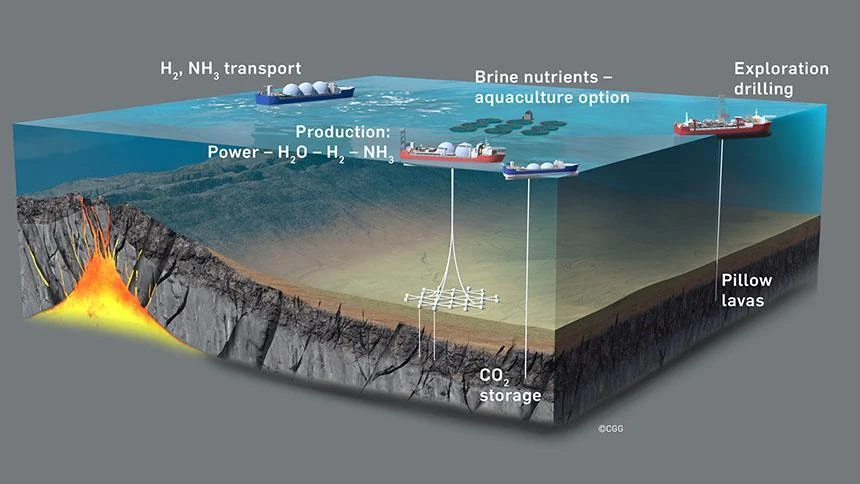Drawing heat directly from magma to power turbines and generate ten times more electricity than a normal borehole: this is the ambitious and crazy goal of the Krafla Magma Testbed (KMT) project in Iceland.
As an emerging segment of the Mid-Atlantic Ridge, Iceland is at the forefront of geothermal energy worldwide. Thanks to its unique geology, the country now generates 90% of its heating and 25% of its electricity from underground heat.
But has Iceland today explored all its geothermal potential? Clearly not…
Scientists are preparing to drill directly into the magma near one of the world’s most active volcanoes, Krafla, in the north-east of the country. The aim: firstly, to gain knowledge of this molten rock by setting up a veritable “magma observatory”; secondly, to design a test bench to take geothermal energy production one step further.
Magma… right under your feet
The idea of drawing heat directly from the Krafla magma was born more or less “accidentally” by the Iceland Deep Drilling Project (IDDP). In the early 2000s, this public-private consortium wanted to study the exploitation of reservoirs of “supercritical” fluids, a very high-temperature phase transporting 3 to 4 times more heat than ordinary hot water.
In 2009, the IDDP team had initiated the drilling of a first well near Krafla. As the IDDP team planned to descend to 4 km, the drill suddenly stalled halfway down: the team had unwittingly hit magma.
After their surprise, the researchers realized two things: that the magma chamber was located at a much shallower depth than they had expected, and that it was possible to drill into it without causing a volcanic eruption.
Taking advantage of this astounding discovery, the researchers carried out tests and measured the energy potential of this volcanic site. They calculated that the temperature of the fluids – 900°C, compared with only 250°C for the best sources of geothermal energy – and their pressure (500 times that of the atmosphere) could produce as much energy as 10 ordinary geothermal wells. And so, in 2014, the Krafla Magma Testbed (KMT) project was set up.
Geothermal energy to help the climate
At COP28 in Dubai at the end of last year, countries pledged to triple installed renewable energy capacity by 2030. For geothermal energy, this means adding 48 GW of electrical capacity and 520 GW of heating and cooling capacity, by drilling 20,000 boreholes every year. Problem: at present, only 1,500 boreholes are drilled each year. To give ourselves a chance of meeting the COP 28 targets, it won’t be enough to just drill and drill! I Exploiting deeper and/or hotter resources to extract more energy from a smaller number of wells will be essential.
Pushing back the frontiers
The first KMT borehole, scheduled for 2026, will test temperature and pressure sensors, as well as materials capable of withstanding the extreme conditions of magma (temperature, pressure), particularly its intense acidity. In addition to acquiring knowledge about the nature of magma, these experiments will enable us to carry out stimulations and collect data designed to improve volcanic eruption forecasting systems.
The second KMT borehole, due to start up in 2028, is designed to extract heat to generate electricity. In the medium term, the aim is to develop an energy technology known as “magma geothermal energy”, using ultra-hot, pressurized fluids to drive turbines.
Thanks to this approach, it may soon be possible to harness the planet’s many volcanic zones to generate near-carbon-neutral electricity, particularly in areas along the mid-ocean ridge where magma lies relatively high in the earth’s crust. By combining techniques for harnessing magma to generate electricity with the knowledge gained from offshore oil platforms, the deployment of geothermal energy close to magma could even develop… at breakneck speed.
Sources :

